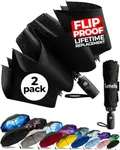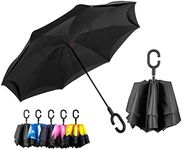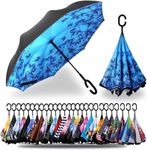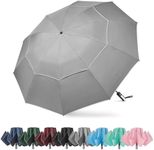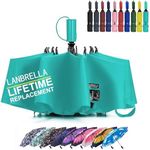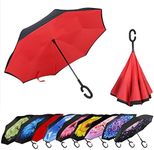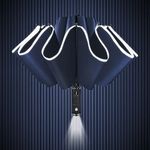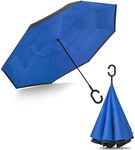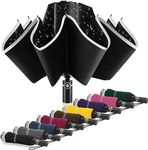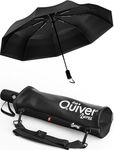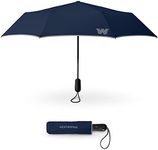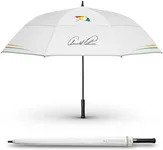Buying Guide for the Best Inverted Umbrella Brand
Choosing the right inverted umbrella can make a significant difference in your daily life, especially if you live in an area with frequent rain. Inverted umbrellas are designed to fold inwards, keeping the wet side of the umbrella contained and preventing water from dripping everywhere. This unique design also makes it easier to get in and out of cars without getting wet. When selecting an inverted umbrella, there are several key specifications to consider to ensure you get the best fit for your needs.SizeThe size of an inverted umbrella is important because it determines how much coverage you will get from the rain. Umbrellas come in various sizes, typically measured by the diameter of the canopy when open. Smaller umbrellas (around 40-45 inches) are more compact and portable, making them ideal for travel or carrying in a bag. Medium-sized umbrellas (46-52 inches) offer a balance between coverage and portability, suitable for everyday use. Larger umbrellas (53 inches and above) provide maximum coverage, which is great for sharing with another person or for those who prefer more protection from the rain. Consider your typical usage and how much coverage you need when choosing the size.
MaterialThe material of the umbrella canopy and frame affects its durability and performance. Canopies are usually made from polyester or pongee fabric, both of which are water-resistant and quick-drying. Polyester is more affordable and durable, while pongee fabric is softer and more luxurious. The frame can be made from materials like aluminum, steel, or fiberglass. Aluminum is lightweight and resistant to rust, steel is strong but heavier, and fiberglass is both lightweight and flexible, making it resistant to breaking in strong winds. Choose a material that matches your priorities, whether it's durability, weight, or resistance to harsh weather.
HandleThe handle of an inverted umbrella can greatly affect your comfort and ease of use. Handles come in various shapes and materials, including straight, curved, and ergonomic designs. Straight handles are simple and easy to store, curved handles offer a classic look and can be hung on hooks, and ergonomic handles are designed to fit comfortably in your hand, reducing strain during prolonged use. Handles can be made from plastic, rubber, or wood, each offering different levels of grip and comfort. Consider how you plan to use the umbrella and choose a handle that feels comfortable and secure in your hand.
Opening MechanismThe opening mechanism of an inverted umbrella determines how easy it is to open and close. There are manual, automatic, and semi-automatic mechanisms. Manual umbrellas require you to push or pull the canopy open and closed, which can be more durable but less convenient. Automatic umbrellas open and close with the push of a button, offering convenience and ease of use, especially when getting in and out of cars. Semi-automatic umbrellas may have an automatic open feature but require manual closing. Think about your typical usage scenarios and choose an opening mechanism that offers the right balance of convenience and durability for you.
Wind ResistanceWind resistance is a crucial factor for an umbrella, especially if you live in a windy area. Wind-resistant umbrellas are designed to withstand strong gusts without flipping inside out. This is typically achieved through reinforced frames, vented canopies, and flexible materials like fiberglass. Some umbrellas are specifically marketed as windproof and have been tested to withstand certain wind speeds. If you frequently face windy conditions, look for an umbrella with high wind resistance to ensure it remains functional and intact during storms.
